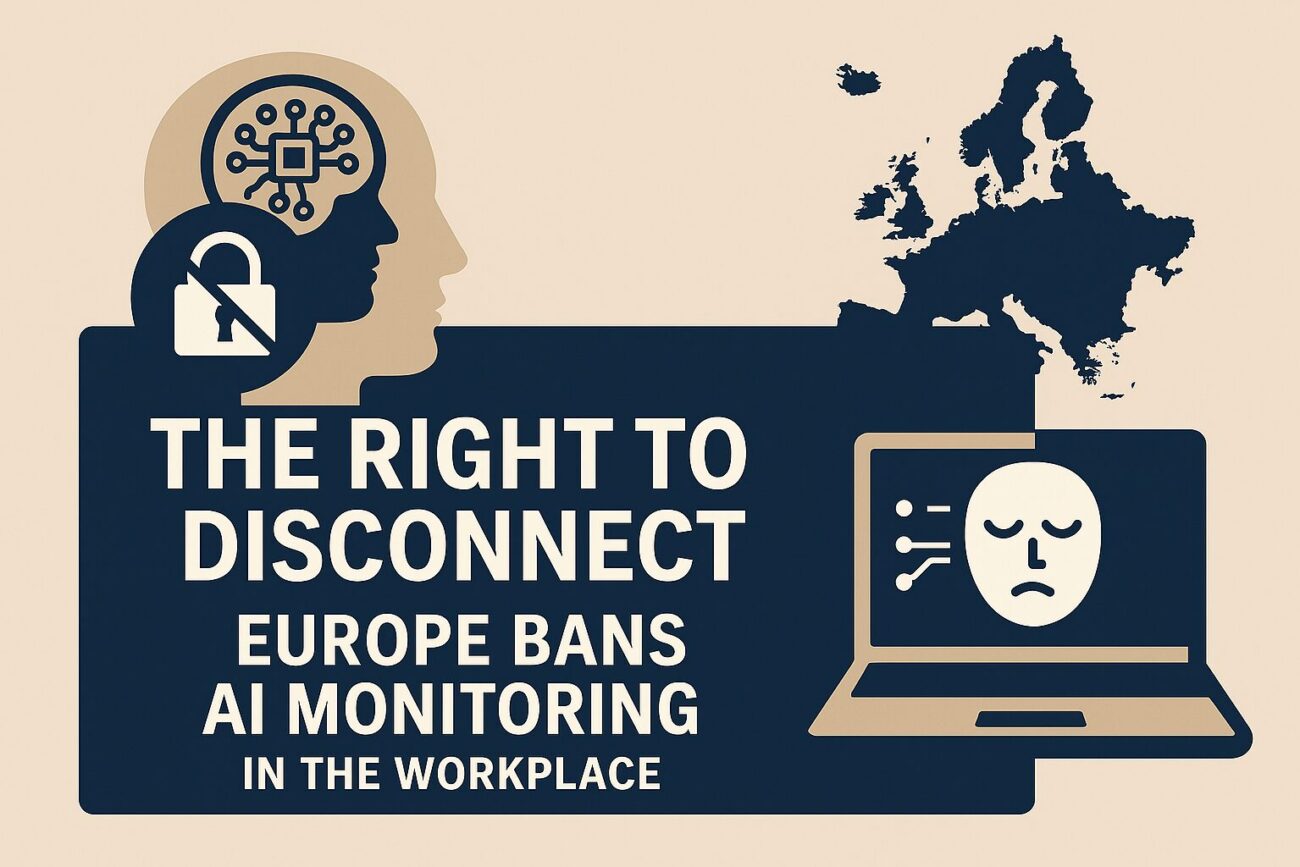Introduction
In a historic move to safeguard employee well-being, the European Union (EU) has officially banned AI-powered emotion tracking and surveillance technologies in workplaces. This landmark legislation, part of the EU Artificial Intelligence Act, reinforces the Right to Disconnect, ensuring workers are no longer subject to invasive digital monitoring outside working hours.
This article explores the implications of the ban, key compliance requirements, and how businesses can adapt to the new regulatory landscape.
🔍 What Is the Right to Disconnect?
The Right to Disconnect is a legal concept that empowers employees to disengage from work-related communications and digital tools outside of official working hours. It aims to:
- Prevent burnout and mental health issues
- Promote work-life balance
- Protect personal privacy in the digital age
With the rise of remote work and AI-driven productivity tools, the EU recognized the urgent need to regulate how employers use technology to monitor staff.
🤖 What AI Monitoring Is Now Banned?
Under the new EU AI Act, the following practices are prohibited:
- Emotion tracking via webcams or voice recognition
- AI-enabled facial recognition in mobile CCTV for law enforcement
- Social scoring systems using personal data like race or origin
- Predictive policing based solely on biometric data
- Dark patterns designed to manipulate users into financial decisions
These bans apply across all EU member states starting August 2, 2025.
📜 Key Compliance Requirements for Employers
✅ Stop AI Surveillance
Employers must immediately cease using AI tools that track emotions, facial expressions, or voice tone to assess employee performance or engagement.
✅ Update Telework Policies
Companies must revise remote work policies to include:
- Clear boundaries for work hours
- No expectation of availability after hours
- Protection against digital overreach
✅ Designate Compliance Officers
EU member states must appoint market surveillance authorities to enforce the AI rules. Businesses should assign internal compliance leads to liaise with regulators.
✅ Prepare for Penalties
Violations may result in fines ranging from 1.5% to 7% of global revenue, depending on severity.
🌍 Who Is Affected?
The ban applies to:
- Private companies using AI for employee monitoring
- Public institutions deploying surveillance tools
- Tech vendors offering emotion-tracking software
- Remote work platforms with built-in analytics
Even indirect use of banned AI tools can trigger liability.
📊 SEO Comparison Table: Pre vs. Post AI Ban
| Feature | Before Ban | After Ban (2025) |
|---|---|---|
| Emotion Tracking | Common in HR tools | Prohibited |
| Facial Recognition in CCTV | Used in law enforcement | Banned with exceptions |
| Predictive Policing | Biometric-based | Banned unless verified |
| Work-Life Boundaries | Often blurred | Legally protected |
| Penalties for Violations | Minimal | Up to 7% of global revenue |
📈 SEO Tips for Content Creators
✅ Search-Friendly Titles
- “EU Bans AI Monitoring: Right to Disconnect Explained”
- “Europe’s AI Act: What Employers Must Know in 2025”
✅ High-Impact Keywords
- “AI monitoring ban Europe 2025”
- “EU right to disconnect law”
- “AI workplace surveillance regulation”
✅ Metadata Optimization
- Alt Text: “Employee disconnecting from AI surveillance tools”
- Tags: #RightToDisconnect #EUAIAct #WorkplacePrivacy #AIRegulation #DigitalRights
Final Thoughts
Europe’s ban on AI monitoring marks a turning point in digital labor rights. By enforcing the Right to Disconnect, the EU is sending a clear message: technology must serve humanity—not control it.
For businesses, the path forward is clear—audit your tools, revise your policies, and prioritize employee dignity.

